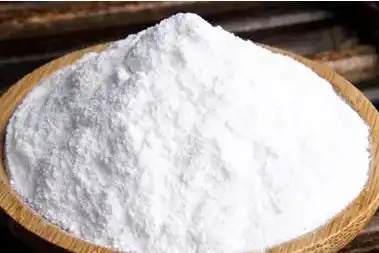Hebei Messi Biology Co., Ltd. said that there is such a saying: “Only the oxides corresponding to soluble alkalis can react with water to form alkalis.” This statement is indeed suitable for the oxides of many elements. For example, copper hydroxide and iron hydroxide are insoluble alkalis, and their corresponding oxides copper oxide and iron oxide cannot react with water to form alkalis. Barium hydroxide and sodium hydroxide are soluble alkalis, and their corresponding oxides sodium oxide and barium oxide can react with water to form alkalis.
However, the above statement is not suitable for the oxides of all elements. For example, the solubility product constants of lanthanum hydroxide and cerium hydroxide are 2.0×10[-19] and 1.6×10[-20] respectively, which are converted into solubility (g/100g water) of 1.8×10[-4] and 9.4×10[-5] respectively. They are both sparingly soluble bases, but lanthanum oxide and cerium oxide can react violently with water at room temperature to form lanthanum hydroxide and cerium hydroxide:
La[,2]O[,3]+3H[,2]O→2La(OH)[,3]
Ce[,2]O[,3]+3H[,2]O→2Ce(OH)[,3]
Magnesium hydroxide is also a sparingly soluble base, with a solubility product constant of 1.8×10[-11], which is about 9.6×10[-4] when converted into solubility (g/100g). So if the above statement is true, magnesium oxide cannot react with water to form magnesium hydroxide.

We first analyze from the perspective of chemical thermodynamics. The relevant data are shown in the table below:
┌───────────────┬───────┬───────┬───────┐
│Substance│MgO(s)│H[,2]O(1)│Mg(OH)[,2](s)│
├───────────────┼───────┼───────┼───────┤
│Standard formation enthalpy△Hf(kJ/mol)│-601.70
│-285.84
│-924.54
│
├───────────────┼───────┼───────┤
│Standard Quasi-formation free energy △Gf (KJ/mol) │-569.44
│-237.19
│-833.58
│
└───────────────┴───────┴───────┴───────┘
Reaction: MgO (s) + H[, 2]O (1) → Mg (OH) [, 2] (s)
△H = -924.5 – [-601.70 + (-285.84)] = -37.00KJ
△G = -833.58 – [-569.44 + (-237.19)] = -26.95KJ
From △G < 0, it can be seen that the reaction can occur; at the same time, from △H < 0, it can be seen that the reaction is an exothermic reaction.
In many books (including some middle school chemistry textbooks), it is mentioned that magnesium oxide can slowly react with water to form magnesium hydroxide.
For this reason, we have done a simple experiment. Put 4.9g of reagent-grade magnesium oxide into distilled water, filter it after leaving it for one day, and dry the precipitate at 105℃ to constant weight. The solid mass obtained is about 5.8g, which is obviously heavier than the original magnesium oxide. This also shows that magnesium oxide can react with water.
But we also know that magnesium oxide can be used as a refractory material. Magnesium oxide used as a refractory material is difficult to react with water. The difference is that the magnesium oxide we usually use is made by decomposing magnesium carbonate (magnesite) or magnesium hydroxide. The decomposition temperature of magnesium carbonate and magnesium hydroxide is about 350℃. The magnesium oxide obtained is a powder with a lower density (lightweight) magnesium oxide. Magnesium oxide used as a refractory material is calcined at high temperature (>1400℃). The powder density of this magnesium oxide is large and the chemical stability is also increased. It is not only difficult to react with water, but also difficult to react with acid. But we cannot say that magnesium oxide does not react with acid.
